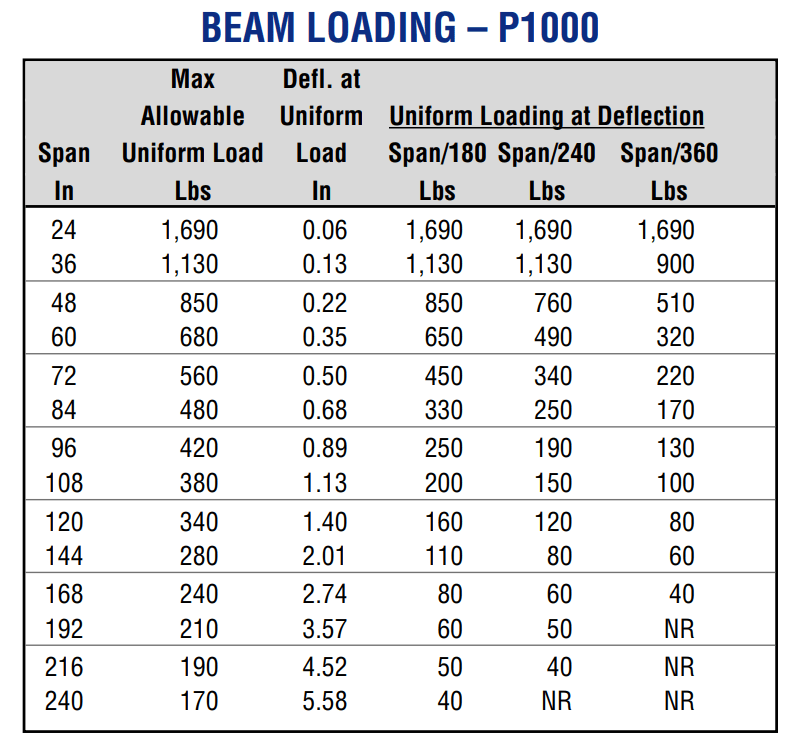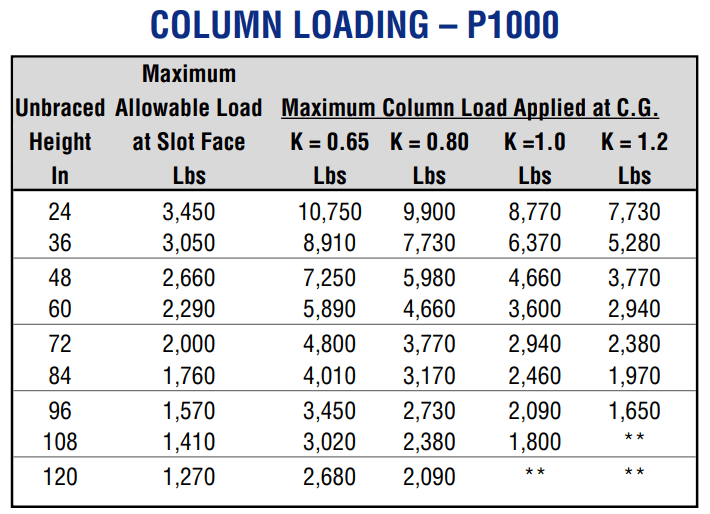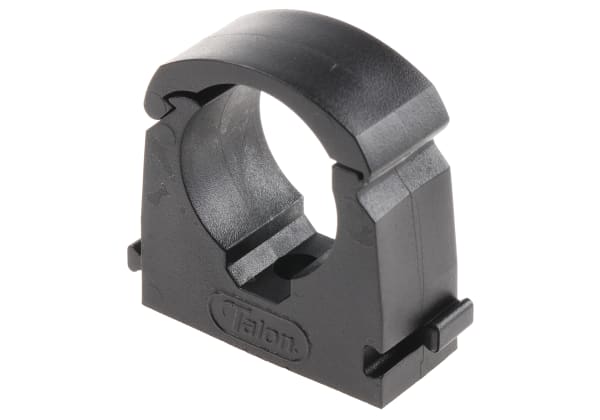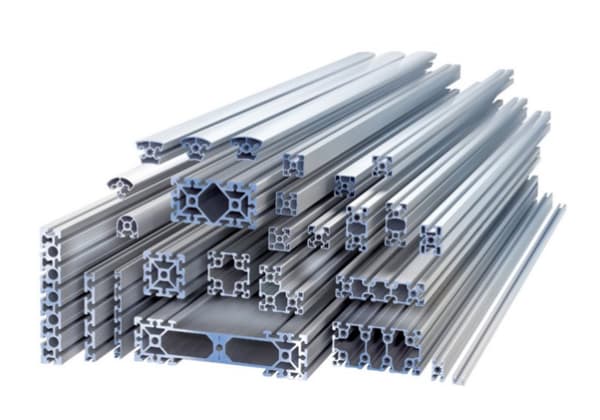- Published 25 Jul 2024
- Last Modified 22 Nov 2024
- 6 min
Guide to Unistrut Dimensions and Loads
Unistrut channels and fittings are widely used in industry. This guide explains the Unistrut channels on the market, their dimensions, and how to determine their load-carrying capacity.
Reviewed by David Carmichael, Solution Engineer (July 2024)
Unistrut has long been a popular mounting method for routing wires, tubes, lights, and ducts. It’s a simple, highly configurable system of channels and support hardware for placing mounting points to your liking. Read on to learn how Unistrut works and how to configure it.
What is Unistrut?
Unistrut is a versatile system of C-shaped channels that facilitate simple equipment mounting. They function using channel nuts that bite and lock inside the C-profile anywhere along the channel; these nuts in turn have a threaded hole to which you can attach Unistrut fittings or mountable items.
The parts of the Unistrut system are highly configurable and reusable, and they require minimal drilling and welding to set up. Once you’ve fastened a Unistrut channel to a wall or ceiling, placing equipment mounting points on it is quick and simple.
What is Unistrut made of? RS carries the following materials of Unistrut products:
- Channels: galvanised steel and stainless steel
- Channel nuts: steel, stainless steel, and zinc-plated steel
- Fittings: steel and stainless steel
- Brackets: steel
RS’s range of Unistrut sizes in these materials gives you all the options you need to configure sturdy, simple mounts suited for your equipment and conditions.
What is Unistrut Used for?
Unistrut excels anywhere you need to hang things from a ceiling or along a wall (or even a floor or angled surface), particularly if they need to go in a straight line. Common applications include:
- Cable routing
- Lighting
- Conduit lines
- Catwalk walkways
- HVAC ductwork
- Solar panel mounts
If the Unistrut load capacity is suited for the weights you need to support, then there is a Unistrut solution for the mounting needs of your application.
Unistrut Channels
These plain channels are the literal framework of the Unistrut system. Mounting them is simple and straightforward, and their C-profile allows placing mounting points anywhere along their length.
There are many Unistrut sizes, but the most common one is the 41 mm wide series. RS carries the classic P1000 variant of this (41 mm tall) along with the P3300 one (21 mm tall). These Unistrut dimensions can handle a wide variety of applications.
As for fastening channels to structures, the channels can come with pre-drilled slotted holes in their webs, though you can drill holes to your liking. Channels can also be welded to structures using the appropriate techniques.
Once you’ve placed the channels, though, you can configure your mounting points and install your equipment without further drilling or welding.
Unistrut Brackets
Unistrut brackets are cantilever arms that extend a short Unistrut track 90° from the bracket flange. Bracket applications include:
- Stairs
- Cable trays
- Shelves
- Pipe supports
Carefully consider the Unistrut load capacity for any Unistrut bracket application. Bracket datasheets give simple capacity options based on where along the bracket the Unistrut weight (or weights) is placed.
Unistrut Nuts and Fittings
Unistrut channel nuts mesh with the Unistrut channel profile to produce a mounting point. Their shape lets you slip them through the channel’s gap anywhere along the track where you need a mounting point. Once you rotate them 90° there, their unique teeth profiles nestle against the ridges of the channel profile. Nuts with built-in springs bite rigidly against the ridges, giving you a strong mounting point that’s both easily installed and removed. Fastening spring-less nuts requires tightening a fitting against the channel using a bolt.
Unistrut fittings are simple brackets with holes for mating with channel nuts. They provide holes for mounting other equipment to, though any items with mounting tabs can affix directly to channel nuts.
How Much Weight can Unistrut Hold?
Determining Unistrut load capacity takes a few steps but is straightforward. A channel datasheet typically has column loading and beam loading tables. These Unistrut load tables give the user an idea of how well a channel is suited for their conditions

Beam Loading: This considers total vertical load distributed evenly across the full span of a horizontal channel. For various span lengths there is a maximum allowable uniform load, that load’s resultant deflection, and a series of loads at common deflection ratios that engineers and architects use in beam design. ‘Span/240,’ for example, lists the maximum load expected to produce a deflection equal to the beam’s span length divided by 240 in the units used. This Unistrut load table thus gives an absolute max. load, and max. loads at common safety factors.

Column Loading: For loads hung from a vertical Unistrut channel, you must first consider how far apart its bracings are that support it laterally (its unbraced height). For any loads hung in cantilever from the channel’s slotted holes (eccentric loads) consider the maximum allowable load at slot face. For the total loads that the channel can take on its centre of gravity without buckling (concentric loads), use one of the maximum column loads applied at C.G. The various K-factors represent common methods of restraining the beam at either end.
These Unistrut load tables are just starting points, though. Unistrut has detailed guides for considering channel hole size, Unistrut weight, and load concentration.
Unistrut Sizes
Unistrut sizes list Unistrut dimensions as the profile’s ‘width by height.’ P3300 channel, for example, is 41 mm wide and 21 mm tall. As with all structural beams, the profile’s height determines the vertical load capacity. P1000 channel (41 mm tall) can thus handle greater loads than P3300.
The Unistrut series also sets the material thickness. P1000 is 12 gauge, while P1100 is 14 gauge (thinner). Thicker material in turn also means a greater Unistrut load capacity.
Channel | Width | Height | Steel Gauge | S/S Gauge | Al Thickness |
|---|---|---|---|---|---|
| P1000 | 41 mm | 41 mm | 12 ga | 12 ga | 3 mm |
| P1100 | 41 mm | 41 mm | 14 ga | 14 ga | N/A |
| P2000 | 41 mm | 41 mm | 16 ga | N/A | N/A |
| P3000 | 41 mm | 35 mm | 12 ga | N/A | N/A |
| P3300 | 41 mm | 22 mm | 12 ga | 12 ga | N/A |
| P4000 | 41 mm | 21 mm | 16 ga | 16 ga | 2mm |
| P4100 | 41 mm | 21 mm | 14 ga | N/A | N/A |
| P4400 | 41 mm | 25 mm | 12 ga | N/A | N/A |
| P4520 | 41 mm | 21 mm | 12 ga | N/A | N/A |
| P5000 | 41 mm | 83 mm | 12 ga | 12 ga | N/A |
| P5500 | 41 mm | 62 mm | 12 ga | N/A | 3 mm |
Unistrut Load Capacity Calculator
This online Unistrut load calculator can help you engineer detailed Unistrut systems, considering things like point or distributed loads, beam constraints, moments, and design standards—all in a 3D design interface.
Other Channel Support Systems
Unistrut beam clamps are a helpful way to connect Unistrut channels with heavier duty structural beams without doing any drilling or welding. These beam clamps can simultaneously grip a Unistrut channel from below and bite onto a structural beam from above. Those beams’ cast, angled surfaces can be challenging to fasten to, and these beam clamps give a helpful solution to that, helpfully letting you hang objects from those structures.
RS also carries support parts for Unistrut under its RS Pro brand. This includes:
- Base plates, which are sturdy end supports for channels
- End caps for the open ends of channels
- RS Pro brackets, fittings, and nuts
Channel Support Checklist
When selecting Unistrut channels to support your equipment, consider the following:
Profile: Does your space pose limits on the channel width or height?
Mounting: Can pre-drilled slotted holes work, or would you rather drill your own? Or weld?
Material: Does the channel need to withstand the elements or corrosion? Will it be welded?
Length: How long (or tall) will your channel span be, and where does it need support?
Loads: What weights do you need to support? Are they point loads or distributed? Study your Unistrut load tables carefully and consider channel thickness.
Hardware: What channel nuts and fittings will you use? Does anything prevent using spring channel nuts?
When you’ve selected Unistrut parts based on all this, RS can help you produce these channel support systems.
Related Articles
Related links
- Unistrut 41 x 41mm Slotted Galvanised Steel Strut, 3m Long
- Unistrut 41 x 41mm Slotted Stainless Steel Strut, 2m Long
- Unistrut 41 x 41mm Galvanised Steel Strut, 3m Long
- Unistrut 41 x 21mm Slotted Strut, 2m Long
- Unistrut Channel Nut Nut Base Dimensions 21 x 41mm 0.04kg
- Unistrut 41 x 41mm Slotted Galvanised Steel Strut, 2m Long
- Unistrut Channel Nut Nut Base Dimensions 35 x 19 x 8mm 0.04kg
- Unistrut 41 x 41mm Galvanised Steel Strut, 2m Long



